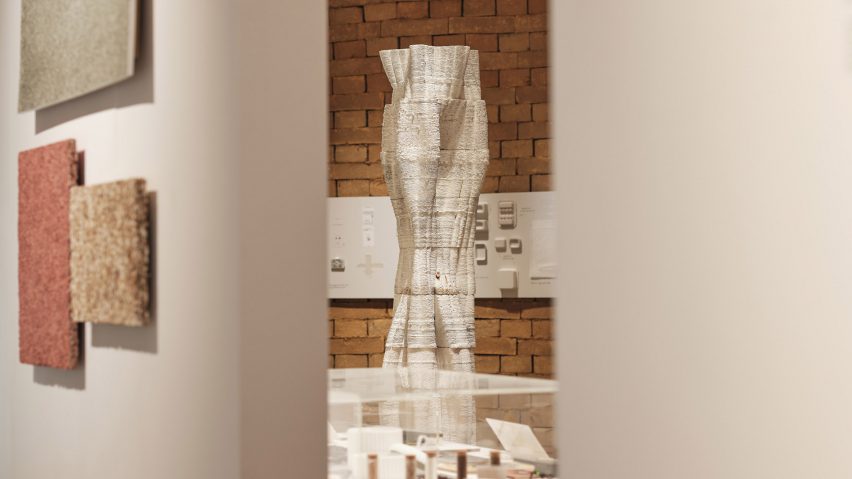
Blast Studio 3D prints column from mycelium to make "architecture that could feed people"
London practice Blast Studio has developed a method for 3D printing with living mycelium and used it to form a column that could be harvested for mushrooms before serving as a structural building element.
The two-metre-high Tree Column has a ridged, undulating structure reminiscent of a tree trunk.
Its shape was algorithmically designed to enhance the column's structural capacity and provide optimum growing conditions for mycelium, the root system of fungi.
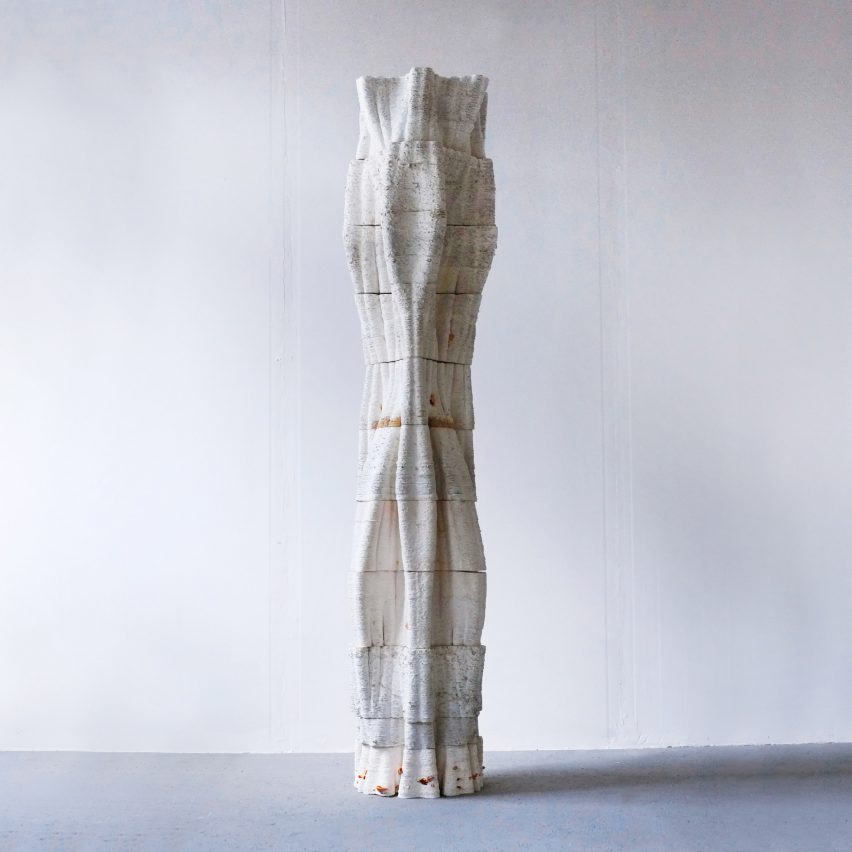
The column was constructed by mixing mycelium with a feedstock of waste coffee cups collected from around London and feeding it into a custom-made cold extruder, similar to the kind used for 3D printing with clay.
Once printed into shape, the mycelium consumes the pulped paper cups and grows to take over the whole column, producing mushrooms that can be picked off and eaten.
The mycelium root structure is then dried to create a load-bearing architectural element with natural insulating and fire-retardant properties.
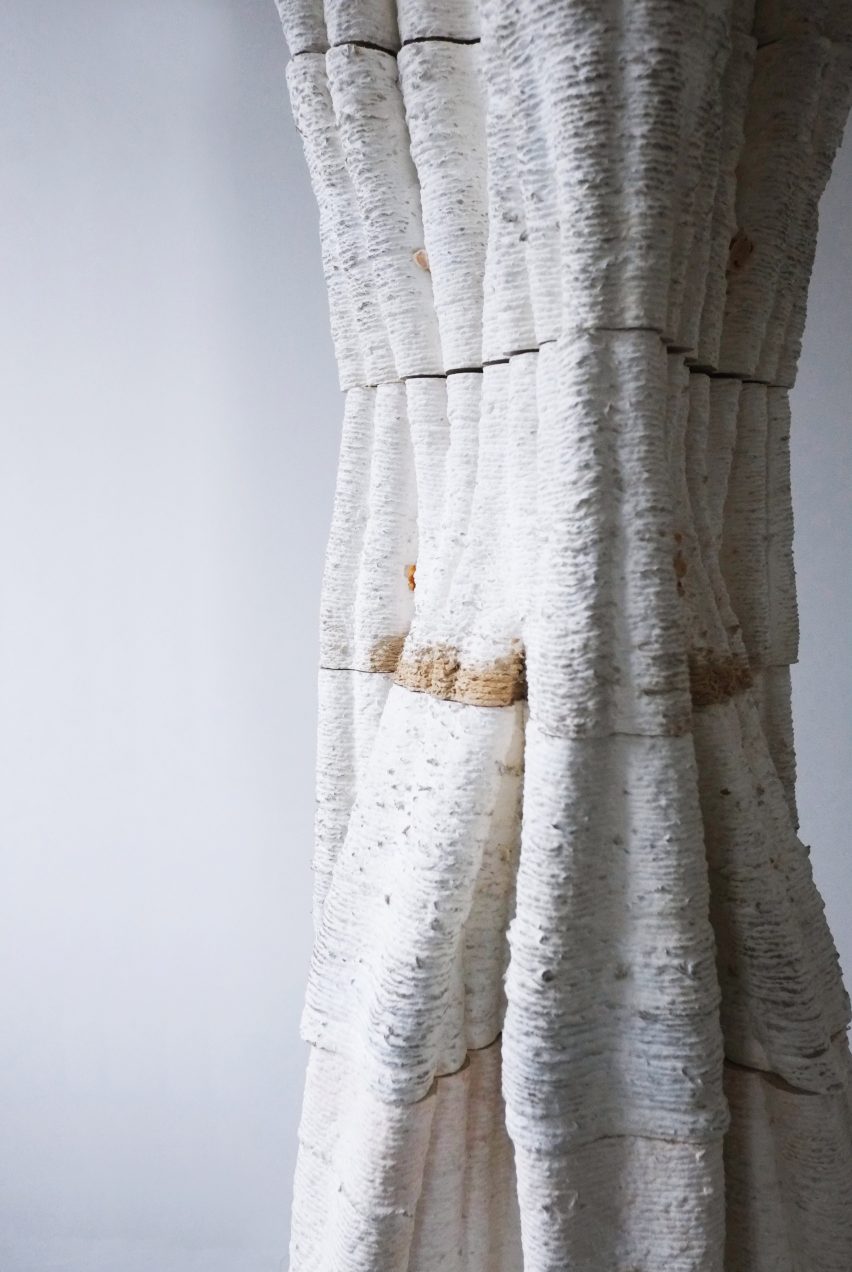
Blast Studio is working to scale up the technology to print a pavilion and in the future, it hopes to construct entire buildings. Co-founder Paola Garnousset said this could effectively allow cities to grow architecture from their own waste while providing food for their inhabitants.
"Our vision is to start a new type of living architecture that could self-repair and be harvested to feed people," she told Dezeen.
"The idea would be to 3D print a living structure in situ, which would be inoculated with different varieties of mushrooms, some with high structural resistance and some delicious ones."
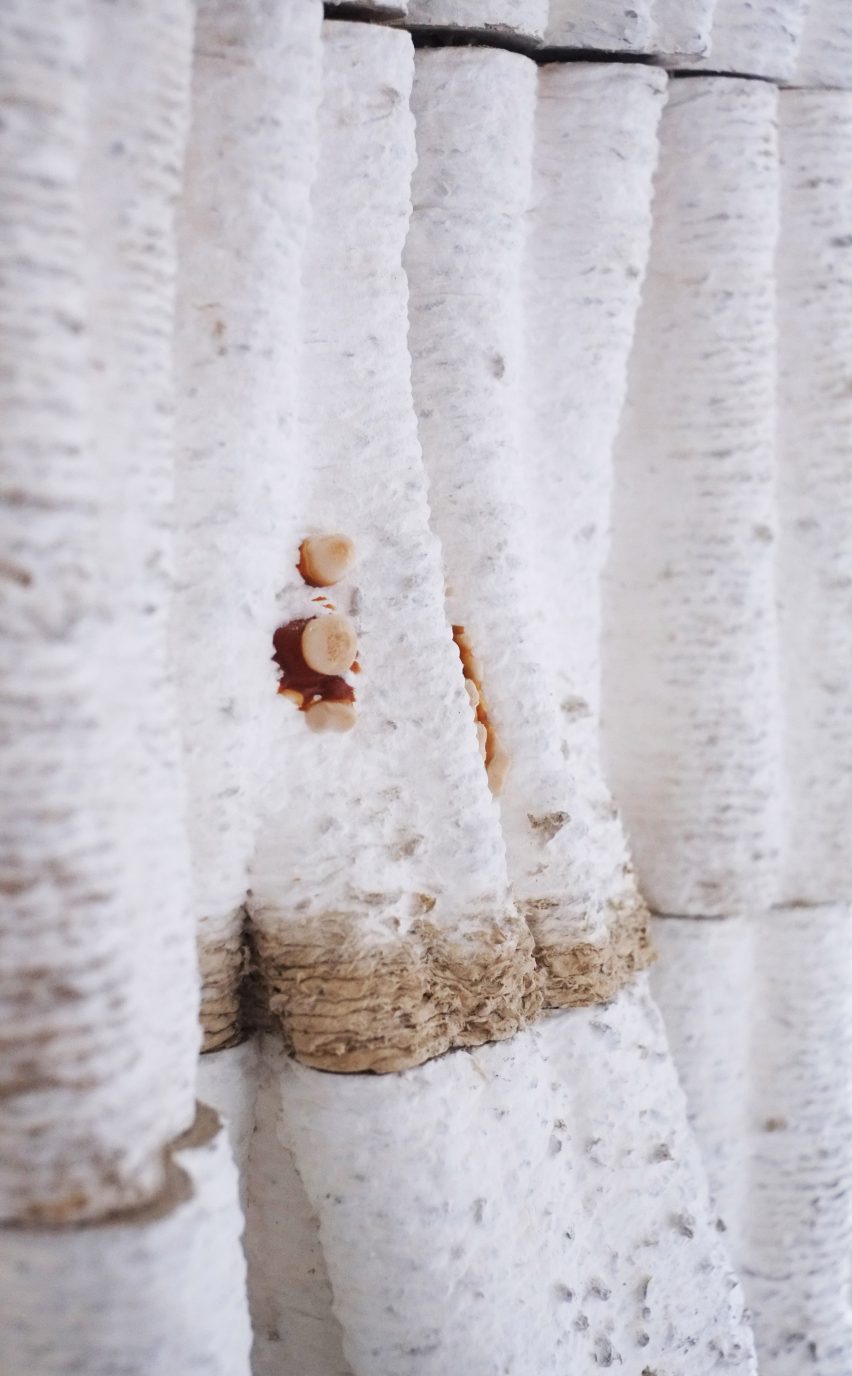
The Tree Column's production process starts with shredding paper coffee cups and boiling them in water to produce a sterilised paper pulp. This is then mixed with the mycelium, as well as any desired natural pigments to add colour.
The resulting biomass paste is pushed through an extruder and 3D-printed, layer by layer, to form 10 separate modules, which are stacked into a column measuring 2.1 metres high and fused together using more mycelium.
Its many folds and crevices were generatively designed to create a structure that could support itself during the additive manufacturing process, as well as supporting the mycelium's growth process by creating sheltered "microclimate pockets" that trap moisture along the length of the column.
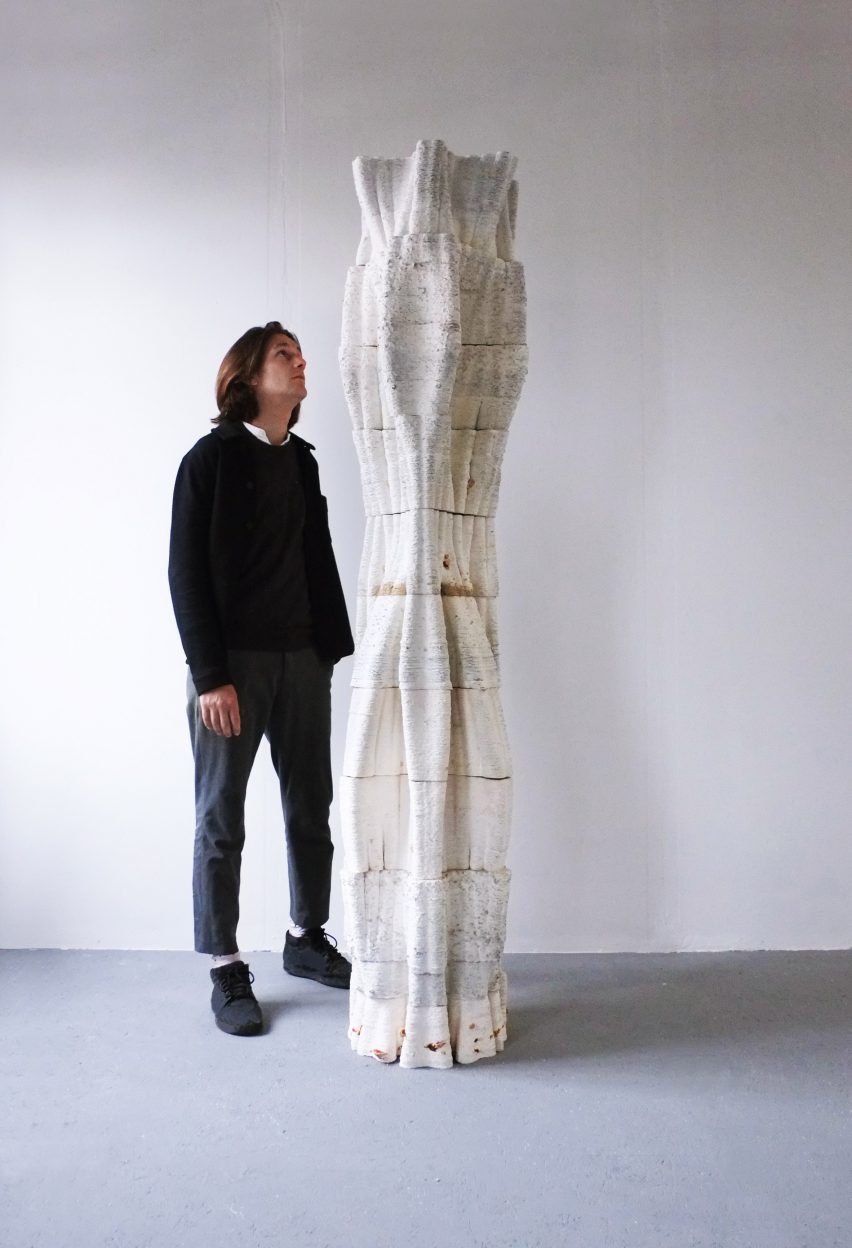
"For the mycelium to grow well, it needs a humid environment away from airflow, like in the undergrowth where it grows naturally," Garnousset explained.
"We were inspired by the shapes of cacti that can successfully grow in the desert by capturing moisture from the wind and creating shade in their folds."
For the first three to four weeks, until the mycelium has grown to encompass the entire column, it needs to be kept inside a contained humid environment similar to a greenhouse.
After that, it is dried at 80 degrees Celcius, effectively killing the organism to stop its growth and solidify the material, which Blast Studio estimates has a similar structural capacity to medium-density fibreboard (MDF).
"The column is very light and good in both compression and flexion thanks to the elasticity of the material," Garnousset said. "In small constructions such as houses and small buildings, concrete could be substituted by mycelium."

If a Tree Column is damaged or no longer needed, it can be recycled and reprinted to form a new architectural element.
But Blast Studio is also looking at creating a self-repairing version of the pillar by drying the mycelium just enough to stop propagation without killing the organism, which would allow it to re-grow over any cracks once exposed to water.
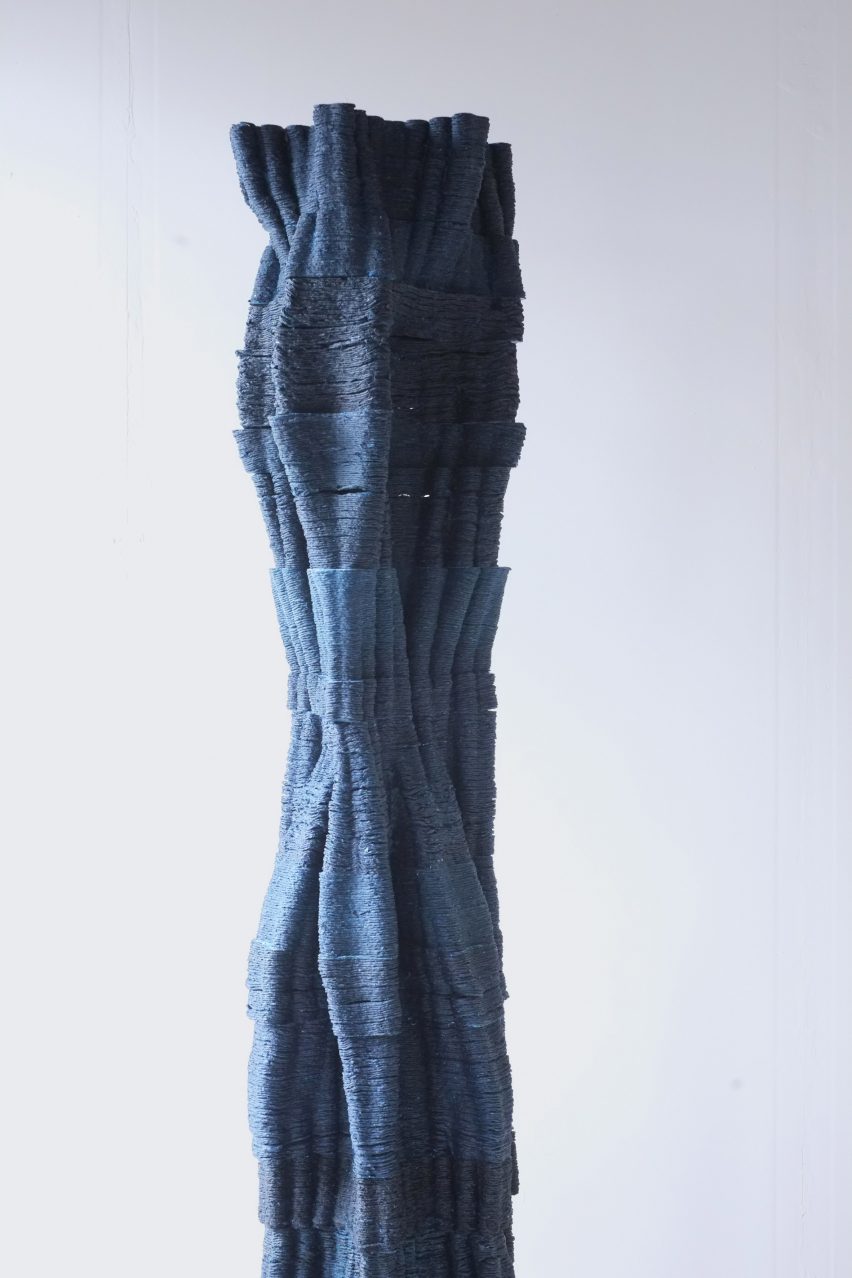
A Tree Column is currently on display as part of the Waste Age exhibition at London's Design Museum and will be used as the first building block for the Tree Pavilion, which the studio is hoping to construct by the end of the year to show that its technology could be applied to a larger architectural scale.
A number of other architects and designers, including Dirk Hebel and New York studio The Living, have also created experimental pavilions using mycelium instead of traditional emissions-intensive structural materials such as concrete and steel.
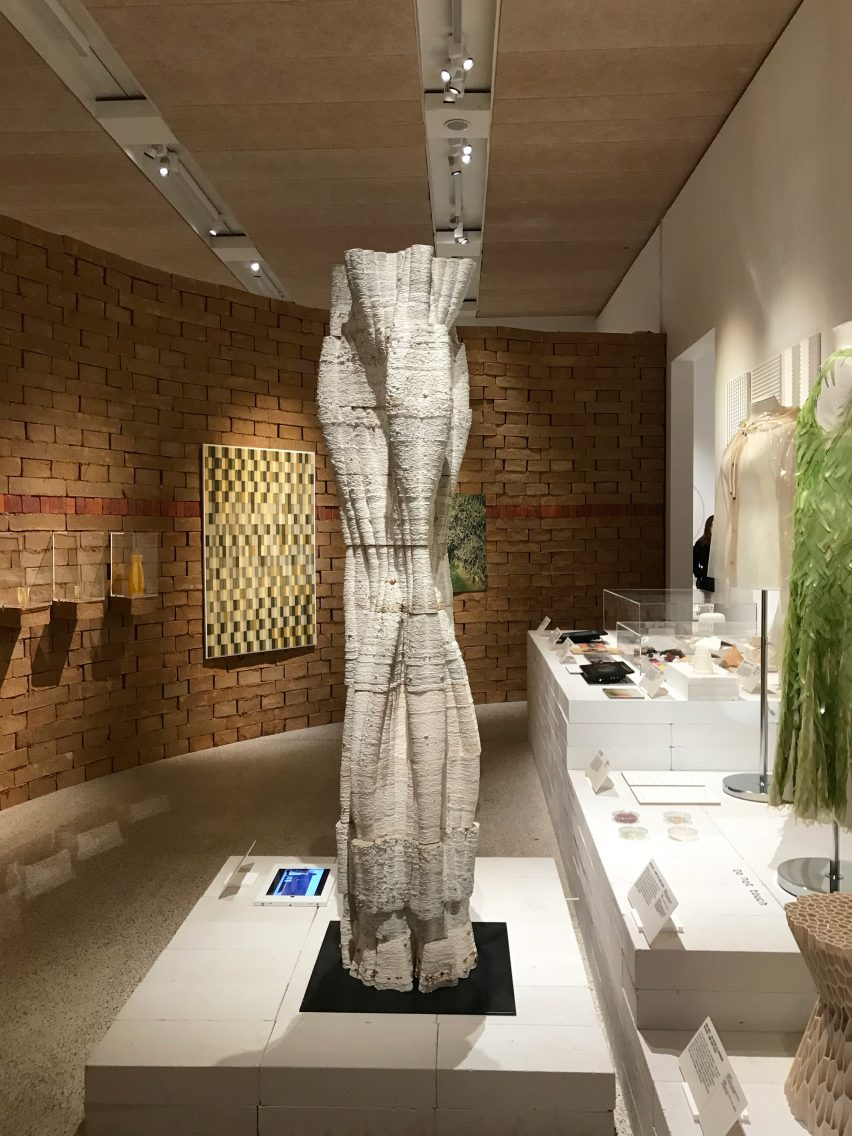
This generally involves the mycelium being grown in a mould to form bricks. But Blast Studio's 3D-printing technology is able to create complex shapes without the need for formwork, which are optimised to improve the performance of the building element while reducing its weight and material use.
While these kinds of applications are still nascent, a number of companies are already working to create certified insulation and acoustic panels from mycelium, which can perform better than their plastic equivalents while sequestering carbon during their growth process.
The top photo is by Felix Speller
